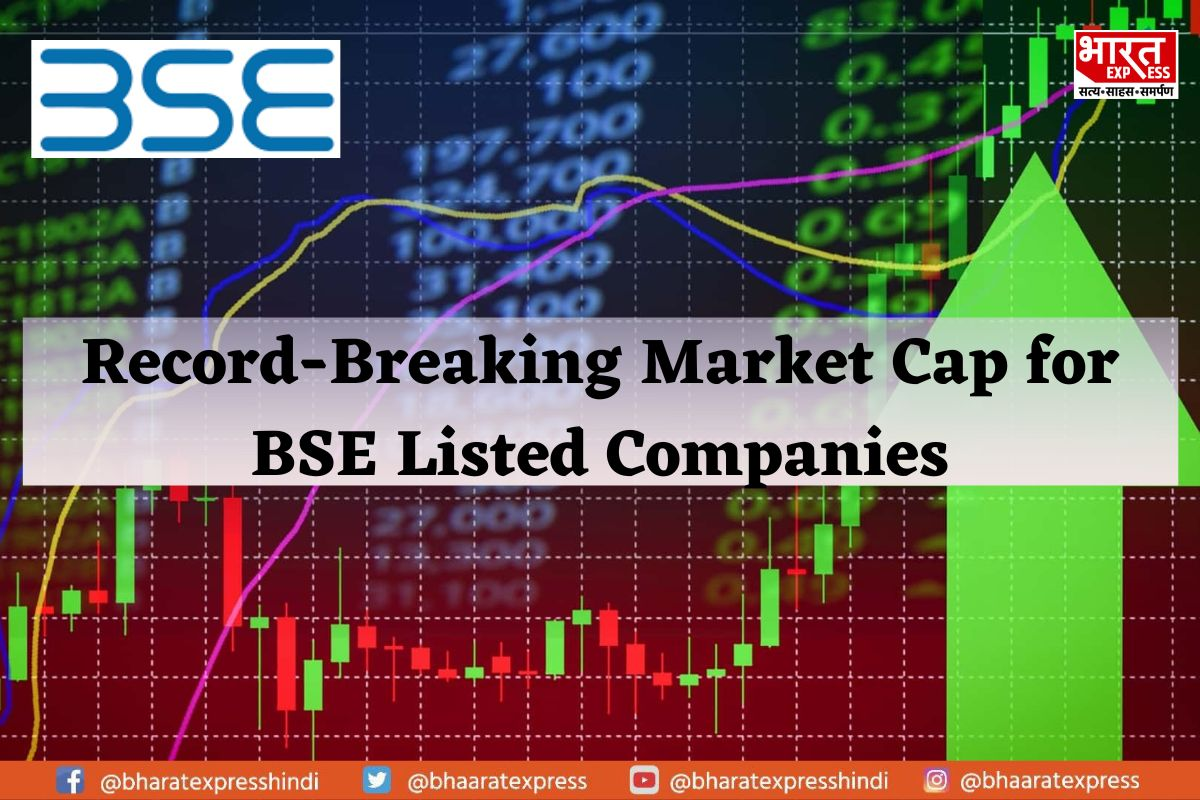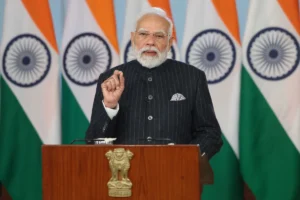
REFERENCE IMAGE
The total market capitalization of all listed companies on the BSE reached a record high of Rs 291.89 lakh crore on June 15. This represents a 16 percent increase in market value from March 28 until the current date, both in rupee and dollar terms. In the year to date, the market capitalization has risen by nearly 4 percent, in both rupee and dollar terms. The previous highest market capitalization was recorded on December 14, 2022, at Rs 291.30 lakh crore.
Despite the Sensex and Nifty being approximately 0.6 percent and 0.4 percent below their respective all-time highs, the overall market valuation reached a new peak. The Sensex reached its highest level of 63,191.86, and the Nifty touched a record high of 18,812.50 on December 1, 2022. From the beginning of the year until now, both the exchanges Sensex and Nifty have risen by 3.5%, while since March 28, they have gained nearly 10% each.
The Indian markets experienced gains following improvements in macro-economic factors, better-than-expected earnings for the March quarter, stable commodity prices, an anticipated pause in rate hikes by the Reserve Bank of India, and continued foreign investor buying. However, recent hawkish comments from the US Federal Reserve have made investors consider the possibility of additional interest rate hikes in the US. While the FED temporarily halted its series of rate hikes to allow the economy to adjust, it signaled the likelihood of implementing further rate increases later this year.
Also Read: Akasa Air Seeks $75-100 Million in Fresh Equity, Aims to Reduce Jhunjhunwala Family’s Ownership
James Cheo who is the Chief Investment Officer for Southeast Asia, Global Private Banking, and Wealth at HSBC, emphasizes the strong economic momentum in India. Cheo highlights India’s robust economic growth and earnings performance, surpassing several other Asian countries.
India’s economy is showing signs of strong recovery, with indicators such as PMI and GST collections reflecting a revival in manufacturing, high-skilled exports, and services. The government’s Performance Linked Incentive scheme and efforts to diversify the global supply chain have contributed to the resurgence of the manufacturing sector. Digitalization is driving spending in the informal economy, and healthier bank balance sheets are facilitating credit growth.
According to James Cheo of HSBC, the bank is overweight on Indian equities due to improving earnings and increased global investor allocation. India’s economy is in a favorable position, characterized by high growth, declining inflation, and a stable rupee, which benefits the local bond market. The potential inclusion of Indian bonds in JPMorgan’s GBI-EM bond index could provide further support. HSBC holds a neutral view on Indian high credit (HC) and low credit (LC) bonds but remains optimistic about Indian local currency government bonds.
Several brokerages have expressed a positive outlook on the Indian markets, with increased targets for the Sensex and Nifty. Morgan Stanley expects the Sensex to reach 68,500 by December, with a trailing price to earnings multiple of 20.5 times, slightly higher than the 25-year average of 20 times. This higher valuation reflects greater confidence in medium-term growth. Goldman Sachs, on the other hand, has a target of 20,000 for the Nifty by the end of March, indicating a 7 percent upside from current levels. The firm believes that a rebound in Chinese equities is unlikely to divert significant funds away from India, as the country’s strong fundamentals will continue to attract long-term investors and sustain market momentum.
Prabhudas Lilladher assesses the value of Nifty to be 12% lower than its average price-to-earnings (PE) ratio of 20.8x over the past 10 years. They predict a 12-month target of 21013 based on an estimated EPS of 1148 for March 2025.
To read more such news, download Bharat Express news apps





















